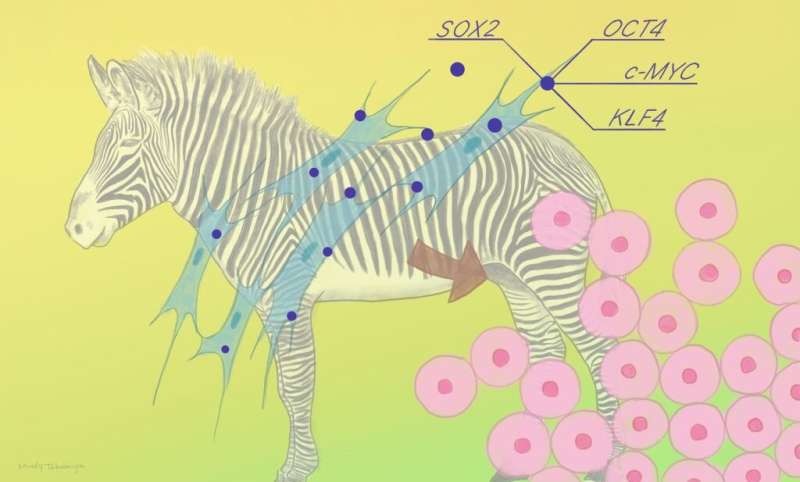Learning from endangered zebra stem cells

Scientists from Kyoto University's Institute for Integrated Cell-Material Sciences (iCeMS) and Wildlife Research Centre have produced stem cells from the endangered Grévy's zebra using human reprogramming factors. Further comprehensive gene analyses identified key genes that are also found in human and mouse cells, providing insight into evolutionary conservation between mammals. The findings were published in the journal Stem Cells and Development.
Mammalian stem cells have drawn interest from researchers for their ability to change into multiple cell types, such as skin, muscle, egg and sperm. Pluripotent stem cells have the capacity for unlimited self-renewal and differentiation into any type of cell. Despite their potential to help researchers understand the genome, few studies have looked into pluripotent stem cells from endangered species. Ken-ichiro Kamei from iCeMS teamed up with Miho Murayama and Yoshinori Endo of the Wildlife Research Center to produce and analyze induced pluripotent stem cells (iPSCs) from Grévy's zebras, which is on the Red List of Threatened Species.
The research group generated iPSCs by converting Grévy's zebra skin cells using human reprogramming factors that tell the differentiated cells to revert back to their stem cell state. The iPSCs were then grown using the same methods as human iPSCs and demonstrated the potential to differentiate into different cell types. The zebra iPSCs exhibited characteristics similar to other mammalian iPSCs, such as their appearance, doubling rate and method of forming colonies. These similarities suggest that Grévy's zebra iPSCs are good candidates to scale up for future research using similar methods as human iPSCs.
The researchers then performed RNA sequencing analyses to better understand and characterize the cells. By examining the genes that were turned on in the zebra iPSCs, the scientists were able to identify key genes, such as those associated with pluripotency and cell adhesion, that are also present in human and mouse stem cells, showing remarkable genetic conservation between these mammalian species.
The successful production of the zebra iPSCs could provide resources for functional research and the artificial reproduction of the endangered species. In the future, the researchers would like to build on their previous work and compare the zebra iPSCs with other species to help advance the understanding of the differences and similarities between mammalian pluripotent stem cells. "We would like to explore how to differentiate Grévy's zebra iPSCs into other cells. This could provide new options for saving this species," says Kamei.
More information: Yoshinori Endo et al, Generation and Gene Expression Profiles of Grevy's Zebra Induced Pluripotent Stem Cells, Stem Cells and Development (2022).
Journal information: Stem Cells and Development
Provided by Kyoto University
















